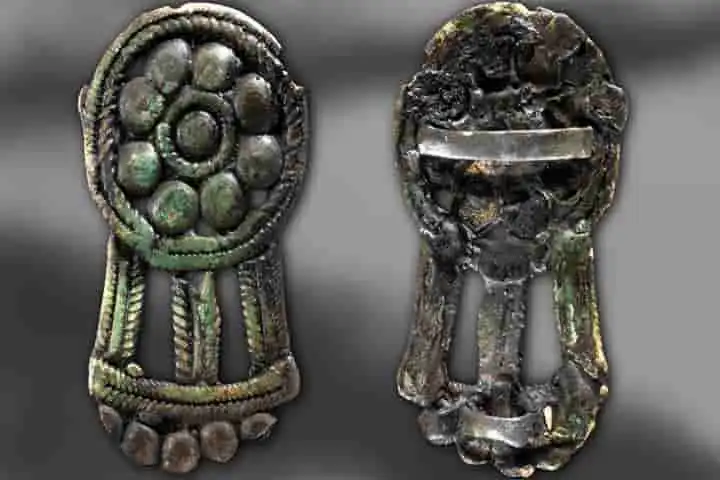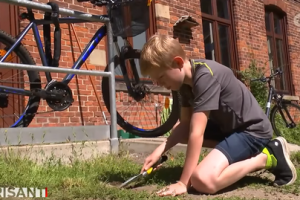Digging and excavations in Sweden’s north-eastern part has revealed fire pits and ancient furnaces and these contrary to previously held belief, were used by the hunter-gatherers for working on metal as per a report in sciencenews.org.
Even though these people who were based near the Arctic Circle, moved from one place to another, that did not prevent them from arranging production of iron and creating metal objects, according to archaeologist Carina Bennerhag from Sweden’s Luleå University of Technology and her colleagues.
Going beyond metal work, these hunter-gatherers who travelled across forests and cold regions also traded information, knowledge and resources – all to do with metallurgy and extraction of metals with others, said a report in Antiquity of December.
According to Kristina Soderholm, a Luleå archaeologist and co-author of the study, these ancient hunter-gatherers of two of the Swedish sites, “probably manufactured more iron and steel, and were more socially organized and sedentary than we previously thought.”
The researchers feel that for the purpose of metal working and extraction these communities would have stayed in these locations for a long period of time. They would have prospected for the mineral, gathered wood for making charcoal and stone and clay for constructing the furnace and pits for fire to be used in production of iron.
For historians and archaeologists working on iron came into being when large agricultural societies came up in southwest Asia more than 3,000 years ago and from there the know-how moved to other places, and finally got adopted between 700 and 1600 AD by people living in northern Scandinavia and other Arctic areas.
This view is being challenged as there is a growing indication that suggests that technologies of the past, which included metallurgy had been learnt by smaller societies quite early, according to Marcos Martinon-Torres, archaeological scientist in the University of Cambridge.
Incidentally, Martinon-Torres was not part of Bennerhag's team. He observed: ““This study is particularly insightful because the metal is iron, typically considered a more challenging metallurgy than copper or gold; the makers are hunter-gatherers, historically assumed to use only basic technologies; and the location is in a region largely ignored in histories of technology.”
Also read: Digital tools help resolve mystery of Pharaoh Amenhotep I after 3,000 years
The first excavations by Bennerhag were done at the site called Sangis. Here the researchers found an iron-smelting furnace that was rectangular in shape and it had a stone-slab frame and was open on one side. Within and partly on the frame a clay shaft was built. Also the frame had holes which acted as inlets to allow air to reach the charcoal burning inside and this was assumed to be done by bellows that were placed on flat stones.
Inside the furnace the scientists found by-products which come out when heating iron ore at high temperatures and remains of a ceramic wall lining. With the help of radiocarbon dating of furnace remains it was found that the production of iron took place around 200 and 50 B.C.
Area which was about 500 metres from the furnace and was occupied by hunter-gatherers had fragments of pottery and other objects and material, all of which dated between around 500 B.C. and A.D. 900. Among the objects found are many fish bones and at least three fire pits which were used to reheat and refine the iron from the furnace. It is here that the researchers discovered many items made of iron and others that were made of steel, a buckle made of bronze and metallic waste with copper droplets on the surface. All this points to Sangis being used to produce varied metals.
Also read: Neanderthals used fire and ingenuity to hunt birds
The experts point out that the decorative style and the moulding technique of the bronze buckle is similar to that of the metal items which have been earlier found at sites of hunter-gatherers located in northwestern Russia and that date back to as early as around 2,300 years ago.
Further, it was found that metal objects at Sangis had either two or more layers that had been welded expertly together. Also in some cases they had been exposed to either of two types of heating processes which helps in increasing its strength.
At the other site that is Vivungi the remains of two iron-smelting furnaces were found. These had iron-ore, by-products of iron production and also ceramic wall lining shards. As per the experts the process of producing iron started at Vivungi near about 100 B.C. and this site yielded no proof of fire pits which were used to purify the iron further.
The bones of animals that were recovered in close proximity to the Vivungi furnaces point at repeated occupation by the hunter-gatherers of this place from around 5300 B.C. to A.D. 1600.
For archaeometallurgist Thilo Rehren of the Cyprus Institute in Nicosia, since there was evidence of production of iron in southern Scandinavia more than 2,000 years ago, discovery of ironwork farther north made sense.
Rehren, who was not part of the study, added that preliminary work showed that iron production in East Asia began more than 2,000 years ago.




















